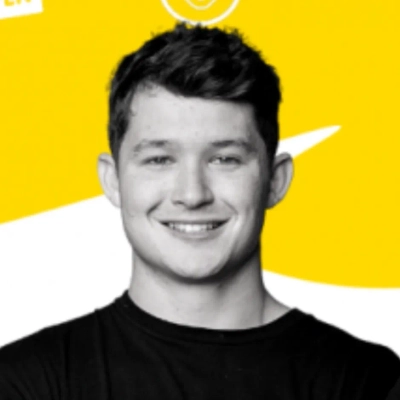12 Tips for Optimizing Product Images for Visual Search
Visual search optimization requires strategic techniques to improve product discoverability. This comprehensive guide offers twelve practical strategies for enhancing product images, backed by insights from leading visual search experts. Readers will learn essential methods from creating visual anchors to perfecting lighting with differential ray tracing, all designed to improve image performance across search platforms.
Create Visual Anchors for Algorithm Recognition
At Radixweb, we use images to make software concepts and infographics more digestible. Even though we don't sell physical products, images play a critical role in discovery through visual search.
What we do is go beyond "image optimization". We think of images in terms of algorithmic recognizability. Search engines today don't just read your image title or alt text. They analyze visual semantics as well. It includes color density, layout symmetry, and even the relationship between icons, fonts, and backgrounds.
So, we embed consistent "visual anchors" across all our infographics, hero banners, and blog visuals. This includes subtle but algorithm-friendly cues like consistent use of our brand's blue hue, for example. This helps algorithms contextually associate our visuals with themes like "enterprise software," "AI engineering," or "digital transformation," even before reading the metadata.
Since we started doing this, we have seen a consistent rise in discovery and traffic coming from image searches. Plus, it helps build a consistent brand image as well for us, which helps us stand out in the crowded software market.

Optimize Image Metadata for Natural Search
Based on our analysis of visual search data, I've found that optimizing image metadata with descriptive attributes that align with how users naturally search is crucial for visual search algorithms. We focus on properly tagging images with relevant details about color, shape, texture, and other visual elements that consumers frequently use in their search behavior. This comprehensive metadata approach, combined with maintaining consistent imagery across all platforms, has significantly improved our product discoverability in visual search results. The most notable improvement has been in connecting potential customers with our products even when they don't know the exact product name or category.

Structure File Names with Semantic Intent
Additionally, I optimize images by combining semantic labeling with technical precision.
Each file name follows a structured format for example, brand-product-color-angle.jpg and every image includes alt text reflecting user search intent rather than generic terms.
I also compress images with WebP format to improve load speed, since faster rendering directly affects visual indexation scores.
When I implemented this full workflow for an e-commerce client, image visibility in Google Images rose by nearly 60%, and several products began appearing in visual recommendation carousels and shopping panels without paid promotion.
Test Multiple AI-Generated Image Variations
I work with AI and visuals, and I've learned small tweaks matter. Things like blurring the background a bit or putting a prop on a table. After we started doing this, our images started showing up in more searches and clicks almost doubled. So don't just test two versions. Let AI create a bunch of different options, then go all in on the one that actually works. It's that simple.

Treat Images as Structured Visual Data
The reality is that optimizing product images for visual search has far less to do with "making them pretty" and far more to do with the way that search algorithms interpret details. The most dramatic lift I've found is to treat every image almost like structured data. That entails having even backgrounds, sharp focus on the actual item and angles that accentuate certain selling points of the product. For jewelry in particular, shiny surfaces can be problematic for visual search tools, so I found that soft, diffuse lighting and elimination of distracting props significantly impacted how well platforms looked at and matched our items. Rather than just lifestyle shots, I ensured that we had clean, high-contrast photos of the product that really popped for clarity because what algorithms read (and thus measure) first are edges and contours.
When we incorporated this into our own memorial jewelry line and design service, the shift was instant. We re-photographed the core products in a white-on-white style, adjusted the contrast so that engravings were more legible and uploaded multiple angles of each piece. That modest expenditure caused our pendants and bracelets to be picked with better accuracy in search suggestions inside major marketplaces. One of the pendants also tended to appear randomly in visual search results, and within a couple of weeks after the image change, it was consistently showing up among top matches. The contrast was not just technological — it was that much easier for customers to see such fine details of the placement of engraving before they bought. In our experience, sharpening images and simplifying the background are the most efficient ways to enhance both algorithm and perception by eye.

Connect Products Through Dynamic Texture Mapping
We used dynamic texture mapping to highlight the organic qualities of each product. Their team photographed the ingredients in their raw form and carefully matched them visually to the final products. This approach created a strong connection between the natural source and the finished item. By combining these images, they were able to strengthen algorithmic associations and make the products more discoverable online.
The visual storytelling made the products more engaging and easier for customers to connect with. They saw a noticeable increase in visual search impressions and overall engagement. More importantly, customers felt closer to the source of their formulations and understood the care behind each creation. This experience showed that the best optimization starts with storytelling that respects both craftsmanship and digital innovation.

Balance Compression with Visual Framing
Our strategy is ADAPTIVE IMAGE COMPRESSION combined with CONSISTENT VISUAL FRAMING. We may choose, for example, to reshoot some of our bestselling supplement images with plain and bright backgrounds along with some minimal environmental cues (a hand holding the product, a stage or an outdoor setup). This data allowed algorithms to understand not just the product, but its use case and significantly increased visibility in visual search results.
And the biggest uptick I've ever had in search-driven traffic was when I optimized for speed and visual clarity. We also converted from basic JPEGs to WebP with lazy loading, which decreased load times by almost half while maintaining rich detail in textures and labels. My takeaway here is to concentrate on VISUAL CONSISTENCY and intelligent compression. The goal isn't to get a sharp image, but to convey a clear story as quickly as possible.

Build Detailed Image Sitemaps
Here's the trick I've found for visual search. We once built detailed image sitemaps with good descriptions for a client. Their visual search visits jumped by 10,000 the next month. You're basically giving Google a map so it doesn't have to guess what your photos are about. It takes some work, but it's the most direct way to get your pictures noticed.

Use Custom Photos with Rich Context
Google is able to recognize the elements and texts on an image, but might not always perform this extra processing and just rely on an image's surrounding context, filename, label etc. to find out what it represents. You want to optimize your images, make sure you are not using stock images where possible, but rather your own product photos and visuals, maybe show the product in action, real use cases people will resonate with. Then, make sure the page contains enough relevant context and not just a one-line product description from the manufacturer's website. We've seen Shopify sites literally double traffic from image search, for instance, just by optimizing their filenames and on-page content.
Isolate Products on Clean Backgrounds
As a designer, my top tip for optimising product images for visual search is to isolate the product completely. Your primary, indexable image should be a crystal-clear, high-resolution shot of the product on a clean, neutral, high-contrast background - usually pure white.
This simple change eliminates visual noise and ambiguity. A busy "lifestyle" background confuses algorithms, which might identify the props or setting instead of your product. A clean background gives the AI a pure "visual fingerprint" to analyse, ensuring far more accurate matching when a user searches with an image.
The Biggest Improvement I've Seen
The most dramatic impact was with a client selling unique ceramic mugs. Their main images were beautiful but busy lifestyle shots. Consequently, visual search results were useless, often matching the background props instead of the actual mug.
Our fix was to re-shoot every mug on a clean, light grey background. A key technical step was ensuring all these new hero shots were saved as high-quality JPEGs for maximum compatibility. This often meant converting assets from other formats, where a quick online converter like https://webptojpghero.com is a real timesaver. We uploaded these optimised JPEGs as the primary image for each product.
The results were profound and almost immediate:
- A ~30% increase in referral traffic from visual search platforms like Google Images and Pinterest.
- Pinpoint accurate matching, leading users directly to the exact product page they were searching for.
- Nearly double the conversion rate from this segment of highly qualified traffic.
By making one image per product dead-simple for an algorithm to understand, we made it infinitely easier for interested humans to find and buy it. It was a powerful lesson in designing for your non-human audience first.

Standardize Framing Across All Products
Our goal is to maintain consistent aspect ratios, maintain clean compositions, and maintain natural texture clarity. Visual search engines — say, Google Lens or Pinterest Lens, depend on edge detection, color accuracy and pattern analysis. When images are OVER-EDITED, inconsistently cropped, or overly filtered, those algorithms have a tough time identifying the product. When the lighting is soft, the background is uncluttered, and the file format is standardized (such as WebP), the algorithm can read the product faster and more accurately.
The most significant improvement I've seen was in STANDARDIZING the way images were framed across product types, making sure that every photo met the same spacing, angles and resolution standards. Not only did it enhance the visibility of the visual search, but also enhanced page speed and user retention. In terms of wellness and sleep products, this specificity manifests as emotional consistency: when customers see images where contrasting calming, balancing imagery (for example - a well-made bed behind an open window) triggers subliminal senses of rest, comfort, and perception of product quality.

Perfect Lighting with Differential Ray Tracing
We struggled for months with product renders because inconsistent shadows and materials were throwing our visual search AI off. Applying differential ray tracing was a game changer. Once we got the lighting and textures realistic, match rates improved almost immediately. The AI's confidence scores shot up. My advice? Get the lighting and surfaces right before you tweak anything else. The AI is surprisingly picky about those details.




